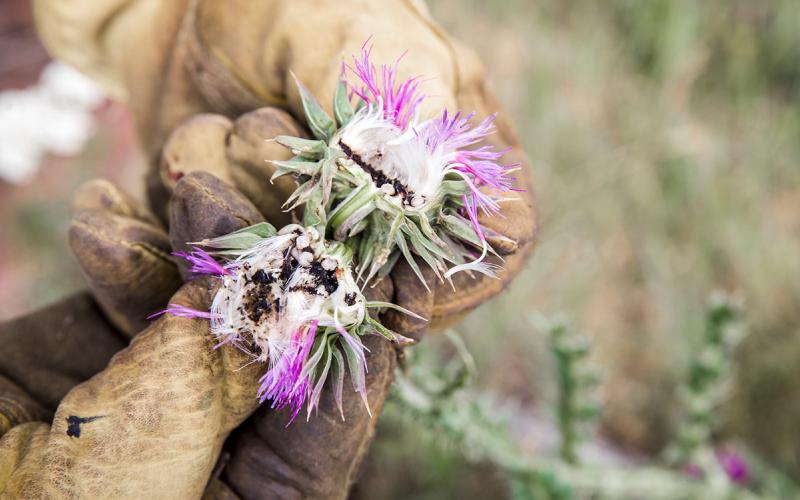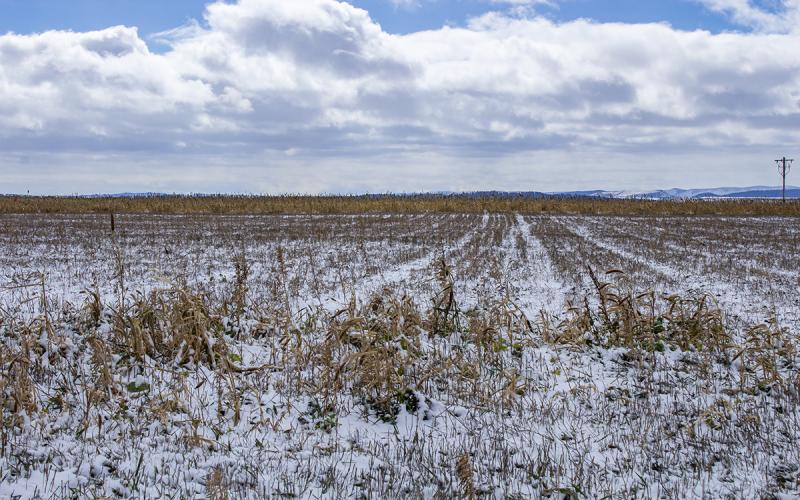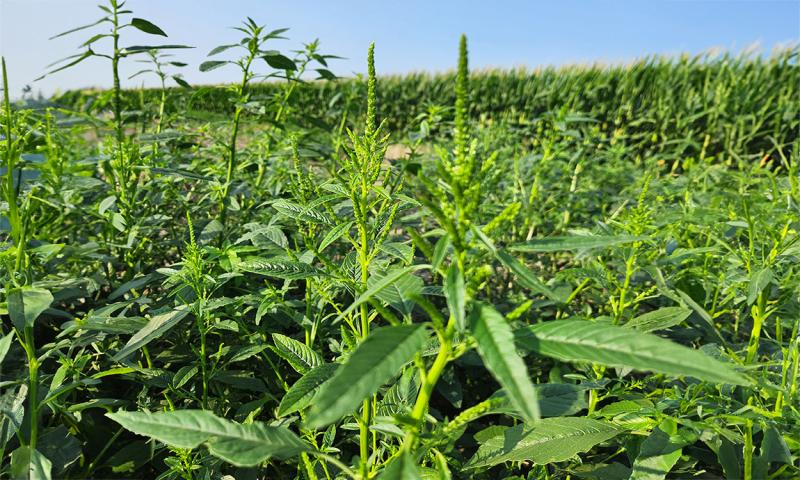
Written collaboratively by Eric Jones, Philip Rozeboom, Jill Alms, and David Vos.
This year soybean planting dates have ranged from early to late in South Dakota. Despite the planting date, many herbicides cannot be applied to flowering soybean. Therefore, any weeds that escaped an herbicide application may have started to flower (Figure 1).
Flowering weeds are an indication that seed production is soon to occur, and viable seeds can be produced within several days of pollination.
Even if a soybean crop has not flowered, weeds that have begun to flower are usually harder to manage with an herbicide.
Mechanical tactics are usually the most effective at managing flowering weeds and minimizing seed production.
Hand Weeding
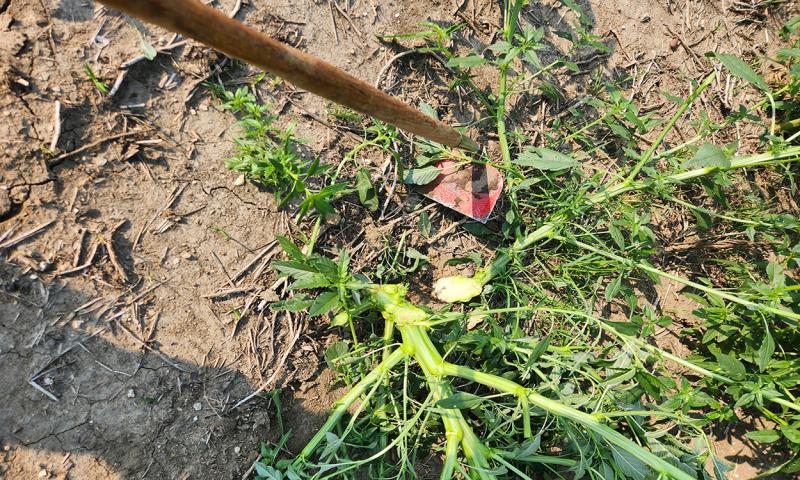
The most-effective management tactic that can be implemented is hand weeding and removing the weed from the field to be destroyed (Figure 2). Removing a hand-weeded weed from the field ensures that any plants that produced viable seed prior do not enter the soil seedbank. This is critical for monoecious weeds (plants that have male and female flowers on the same plant), such as kochia, foxtail species, lambsquarters, ragweed, and redroot pigweed. Waterhemp is a dioecious plant (separate male and female flowers), and the male plants usually flower first. The phenomenon of the male plant flowering first is referred to as flowering asynchrony; the pollen is already produced and viable for fertilization before the female flower is produced. However, the flowers of male and female plants can be difficult to identify, so it is recommended to treat every waterhemp plant, as if it can produce seed. The flowering weeds are usually easier to spot via scouting, and patches can be seen from a distance due to the differential size of the crop.
Mowing
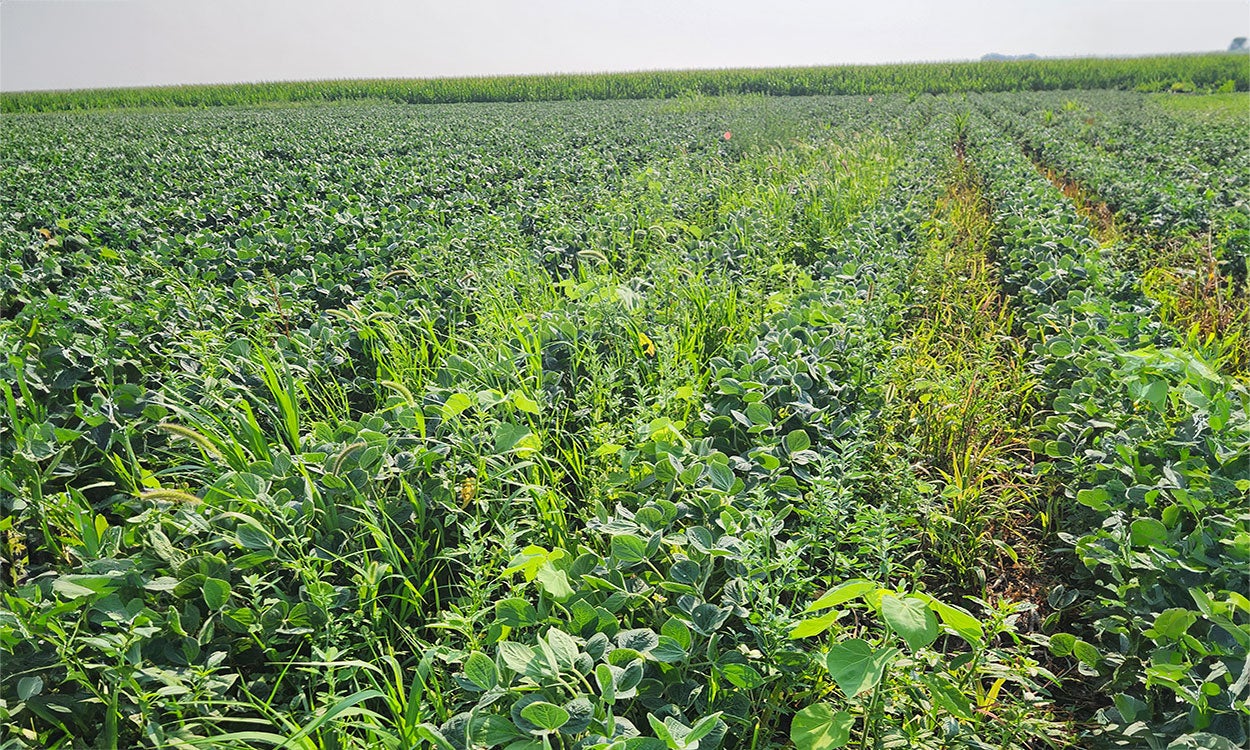
Mowing can be effective as well. While it is not recommended to mow out areas of cropland to manage weeds, larger areas of difficult-to-control weeds (such as kochia in sunflower) may be the only viable option to minimize the amount of seeds being produced and protect crop yield potential in subsequent growing seasons (Figure 3). Mowing approaches, farmyards, and similar areas is a good way to manage weed seed production. These areas usually do not have a crop present, but the seeds produced by the weeds will inevitably encroach adjacent fields.
Herbicide Considerations
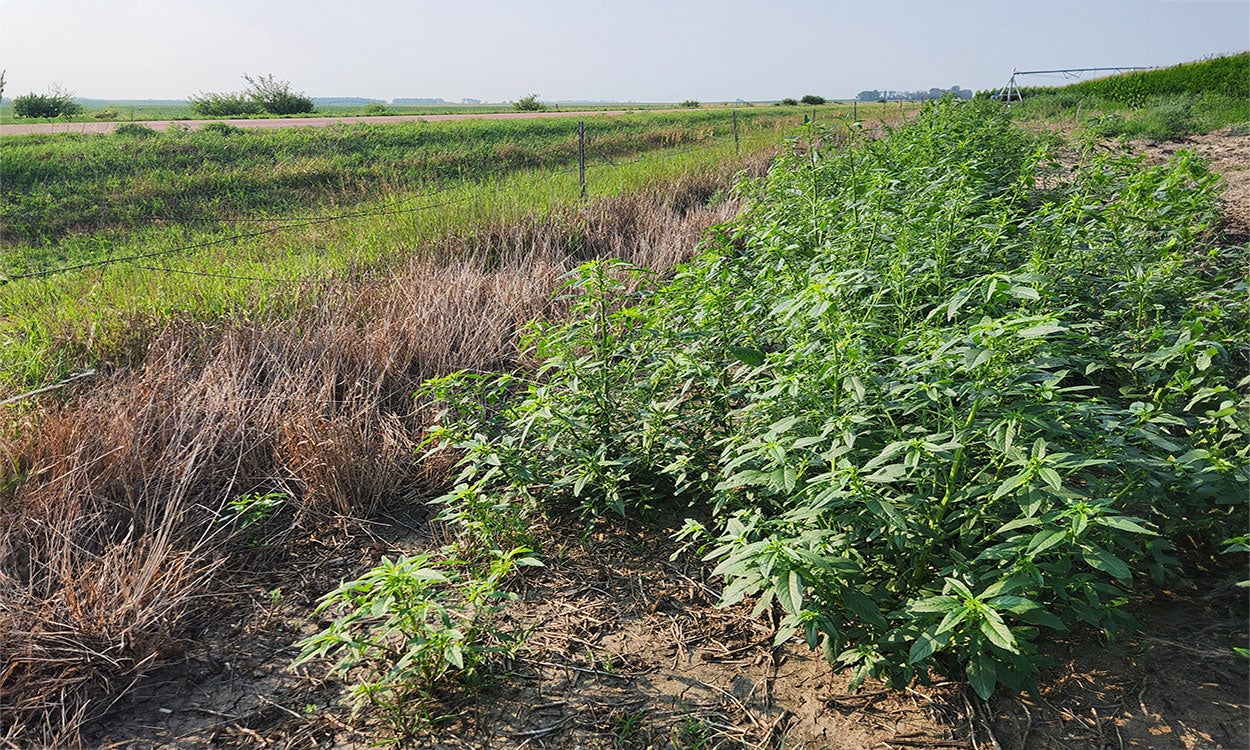
Herbicides can be used in these areas, but make sure the weeds are small (<4 inches in height). Fencerows along field edges usually harbor weeds that were not controlled by herbicide applications within the crop. These areas can be hand-weeded, mowed, or trimmed to manage the larger weeds (Figure 4). Herbicides can again be used in these areas, but be cognizant of adjacent crops and weather conditions (temperatures under 85 degrees and wind speeds between 5 to 10 mph).
